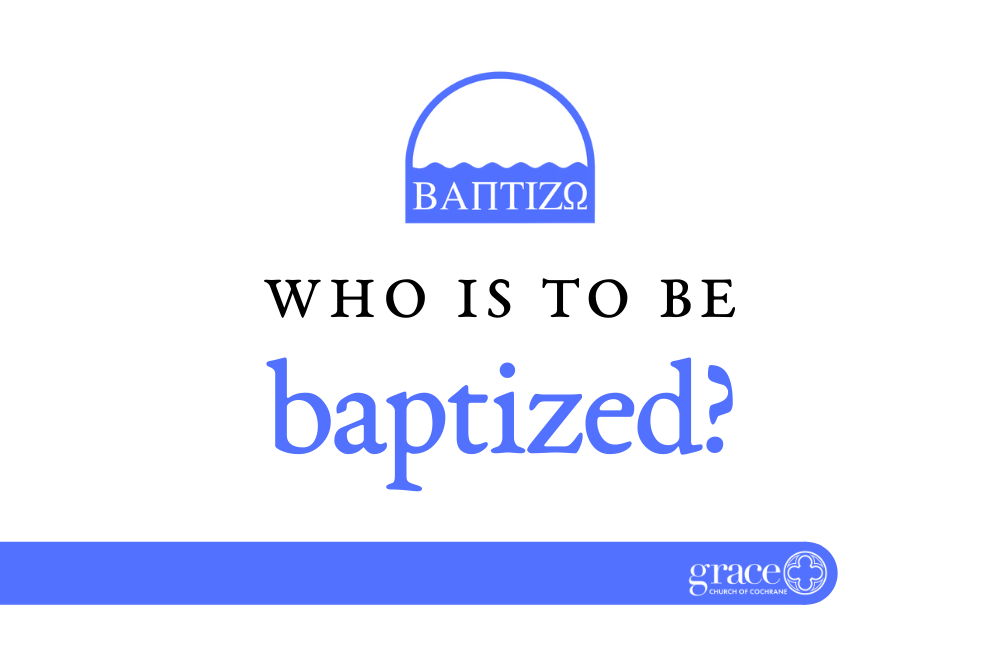Who Is To Be Baptized?

This is the first of a series of articles here at the church blog examining the doctrine of believer's baptism.
_____________
Go therefore and make disciples of all nations, baptizing them... (Matt. 28:19a)
Probably the majority of Christian traditions today perform baptism on infants. This is a practice that dates back to ancient times, to be sure. And this is a beautiful demonstration of parents’ and congregations’ commitment to raise those children in the fear of the Lord. But is this actually baptism?
History and tradition are important guides, but it is the Bible alone that is the final and only infallible authority for our faith and practice. And the Bible is quite plain that it is believers, those who are capable of understanding and confessing their faith, who are to be baptized. Why do Christians baptize anyone in the first place? Because Jesus tells us to do so. And in the very passage where we find that instruction, we also find out just who it is that we are to baptize: “Go therefore and make disciples of all nations, baptizing them in the name of the Father and of the Son and of the Holy Spirit, teaching them to observe all that I have commanded you” (Matt. 28:19). Christians are to “make disciples,” that is, followers of Jesus, those who are capable of being taught to “observe all that I have commanded you.” And it is disciples who Jesus then says we are to baptize.
And when we look at other New Testament passages, we find the same pattern: faith, then baptism. After Peter’s Pentecost sermon recorded in Acts chapter 2, we are told that “those who received his word were baptized” (Acts 2:41). In Acts chapter 8:12, as Philip the Evangelist is preaching the Gospel to the Samaritans, we are told that “when they believed Philip as he preached good news about the kingdom of God and the name of Jesus Christ, they were baptized, both men and women.” When Peter preached to Cornelius’ household and saw the evidence of the Holy Spirit falling on his hearers, he asked: “Can anyone withhold water for baptizing these people, who have received the Holy Spirit just as we have?” (Acts 10:47). In Acts 16, we see the same pattern of baptism following faith in the case of Lydia: “the Lord opened her heart to pay attention to what Paul said. And after she was baptized...” (Acts 16:14-15). Just a little bit later, Paul told the Philippian jailer to “‘believe in the Lord Jesus and you will be saved, you and your household.’ And they spoke the word of the Lord to him and to all who were in his house... and he was baptized at once, he and all his family” (Acts 16:31-33). Don’t miss that there, too, the command was to “believe... you and your household,” that Paul then “spoke the word....to him and to all who were in his house”—and then, and only after those things were done, were they baptized.
Baptism in the New Testament was always, without exception, given to those who believed and gave outward evidence of that faith. On the other hand, there is no example or command in the Bible to baptize infants. That’s why we baptize only believers at Grace Church.
More in Blog
August 15, 2022
Registration is LIVE for our "Zoomerang" VBS August 15-19!June 14, 2022
Means of Grace for June 14: God's Nature, Spurgeon's Evangelist, Culture War, Tradition & More!March 16, 2022
Preparing for One's Baptism Service